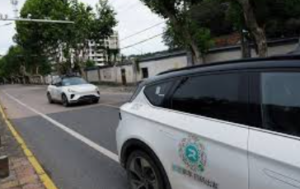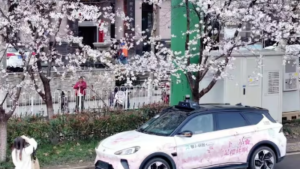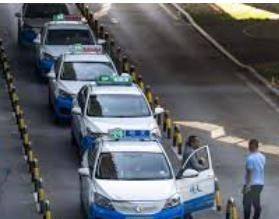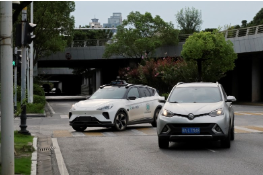Keywords: China robotaxi, autonomous vehicles, job displacement, Baidu Apollo Go, Elon Musk, Tesla Full-Self Driving, job opportunities, technology industry, self-driving cars, transportation innovation.
China’s Robotaxi Surge
In a major development, China has issued 16,000 test licenses for autonomous vehicles (AVs) and opened 32,000 kilometers of public test roads. This move is part of China’s strategy to dominate the global autonomous driving market. Domestic automakers like BYD and Nio, as well as international players such as Tesla, are actively testing their autonomous technologies on these roads, with Tesla aiming for regulatory approval for its Full-Self Driving technology by year-end.
Baidu’s Apollo Go is leading the charge in China’s robotaxi sector. Currently operating 400 autonomous taxis in Wuhan, Baidu plans to increase this fleet to 1,000 by the end of 2024. Despite the growth, Baidu’s market share in Wuhan’s ride-hailing industry remains modest at around 1%, according to CEO Robin
Concerns Over Job Displacement
The rapid deployment of robotaxis has led to fears of job losses among traditional taxi drivers. Many Chinese social media users express concerns that autonomous vehicles are “snatching rice bowls” or taking away their jobs. This concern is exacerbated by the expected displacement of driving jobs as autonomous technology advances.
Mohit Sharma, an analyst at Counterpoint Research, acknowledges that autonomous vehicles will lead to job displacement. However, he points out that the existing shortage of drivers may cushion the impact. For taxi companies, autonomous vehicles could address driver shortages and reduce operational costs.

Emerging Job Opportunities
Despite the job displacement concerns, the rise of autonomous vehicles is also creating new job opportunities. Jeff Farrah, CEO of the Autonomous Vehicle Industry Association, notes that the AV industry is generating a variety of well-paying roles, including service technicians, remote assistance operators, mapping specialists, and dispatchers. These positions are crucial for supporting the development and deployment of autonomous technology.
Baidu’s Apollo Go is committed to creating new roles within its ecosystem. Positions in monitoring and testing systems, as well as data annotation, are becoming available. For instance, Wang Juan, an on-road testing operator at Apollo Go, transitioned from a traditional automaking job to a new role focused on testing autonomous vehicles.
Sharma highlights that while job displacement is a concern, technological innovation will also lead to new employment opportunities. Fields such as cybersecurity, vehicle testing and validation, and software development are expected to see growth as autonomous driving technology evolves.
Looking Ahead
The transition to autonomous vehicles is anticipated to be gradual, with different regions adopting the technology at varying rates. This transition period offers a chance for governments, businesses, and educational institutions to prepare the workforce for future job roles.
As China advances its robotaxi program, the balance between job displacement and job creation will be critical. While the rise of autonomous vehicles poses challenges for traditional drivers, it also opens doors to new opportunities in a rapidly evolving industry.
Regulatory Actions: On August 29, 2024, China issued 16,000 test licenses for autonomous vehicles and opened 32,000 kilometers of public roads for testing. This regulatory move supports the rapid development and deployment of self-driving technology in the country.







